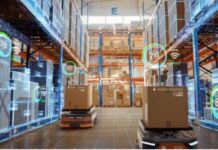Enter the Track and Trace Packaging Market a rapidly expanding sector expected to soar from USD 6.97 billion in 2025 to USD 19.35 billion by 2034, powered by a robust CAGR of 12.02%.
But this isn’t just another industrial upgrade. Track and trace packaging is revolutionizing how goods move through the global marketplace offering authentication, real-time tracking, and end-to-end visibility. With everything from RFID chips and QR codes to blockchain and AI-driven logistics, the once-humble packaging box is becoming a powerhouse of data, trust, and compliance.
What is Track and Trace Packaging?
Think of it as a digital passport for products. Track and trace packaging integrates technologies like barcodes, RFID tags, 2D matrix codes, and even blockchain into product packaging, allowing stakeholders to monitor a product’s journey from factory to consumer.
Whether you’re a pharma giant ensuring a vaccine’s integrity, or a DTC brand offering real-time shipment updates, these intelligent systems ensure safety, efficiency, and accountability every step of the way.
Why Is the Market Booming?
The growth is being driven by increased regulation, rising counterfeit threats, and the explosive growth of e-commerce. Government mandates like the U.S. Drug Supply Chain Security Act (DSCSA) and the EU Falsified Medicines Directive (FMD) now require full traceability for certain goods, particularly in pharmaceuticals and food safety.
But there’s also a consumer-driven shift at play: more than ever, buyers want to know where their products come from, how they were handled, and if they’re genuine. In fact, 42% of European shoppers and 37% in North America have admitted to avoiding products with excessive or unclear packaging.
Regional Dynamics
- North America led the market in 2024, largely due to early adoption and strong compliance frameworks.
- Asia Pacific is poised for the fastest growth, driven by booming e-commerce, manufacturing, and government efforts in India and China.
- Europe is no laggard either, with its environmentally driven packaging mandates and digital supply chain transformation.
Top Technologies Reshaping the Industry
1. Barcodes (1D & 2D)
These continue to dominate due to their simplicity, affordability, and widespread compatibility. Perfect for inventory control, they’re still the go-to for retail and logistics.
2. Blockchain-Based Traceability
The rising star. Blockchain ensures tamper-proof, decentralized tracking, offering unmatched transparency and security a game-changer for luxury goods, food, and pharma.
3. RFID-Embedded Packaging
RFID tags are becoming more affordable and allow non-line-of-sight scanning, enabling real-time monitoring of entire batches of goods simultaneously.
4. AI Integration
AI supercharges tracking by analyzing movement patterns, predicting disruptions, and even using image recognition to flag counterfeits. It’s also driving smarter routing and dynamic inventory control.
Packaging Levels That Matter
- Secondary Packaging (like boxes and cartons) remains the dominant player due to its efficiency for batch labeling and compliance.
- Primary Packaging, however, is gaining momentum. With QR codes and freshness sensors directly on bottles or blister packs, it adds value not just for logistics, but also for consumer engagement and safety.
Industries Leading the Charge
Pharmaceuticals & Healthcare
No surprise here. With regulatory pressure and high-stakes products, this sector has the largest market share.
E-Commerce & Retail
This segment is growing the fastest. Why? Because consumers want real-time delivery updates, smarter returns, and brand transparency. Track and trace systems now power everything from warehouse accuracy to interactive unboxing experiences.
Sustainability Meets Innovation
Track and trace isn’t just about security it’s also pushing eco-innovation:
- Biodegradable packaging made from seaweed, mushroom mycelium, or even orange peels is gaining ground.
- Returnable systems like reusable kegs or bottles are reducing waste in food and beverage sectors.
- Smart sensors are helping optimize waste collection and recycling.
Challenges Ahead
Despite the optimism, the market faces hurdles:
- Lack of standardization across global systems.
- Complex integration with legacy software.
- Varying regulations make implementation tough for multinational companies.
Still, with increasing collaboration among tech leaders, regulators, and industry players, these barriers are gradually being overcome.
What’s Next?
The future of track and trace packaging is not just digital it’s intelligent, sustainable, and customer-focused. With AI, blockchain, and IoT driving rapid transformation, we’re heading toward a world where every product is not only traceable but interactive, smart, and secure.
In short, packaging is no longer just a wrapper it’s becoming the first point of trust between brands and consumers.
About the Author: Yogesh Kulkarni is an experienced Research Analyst specializing in the packaging sector, with a strong foundation in statistical analysis and market intelligence. He currently contributes his expertise to Towards Packaging.

















